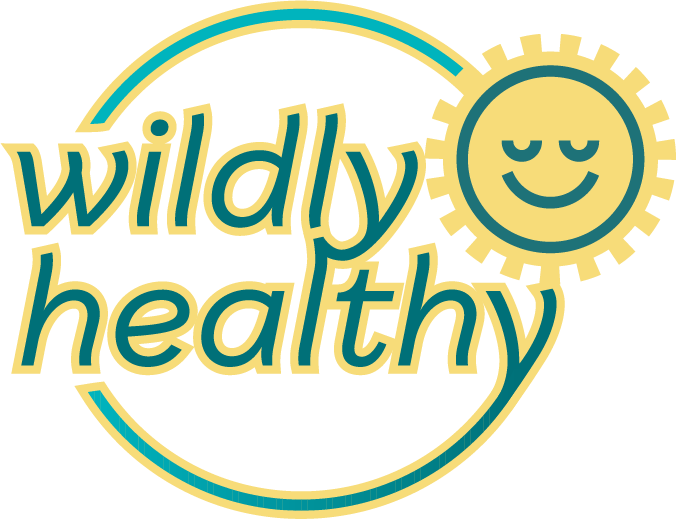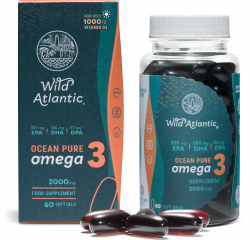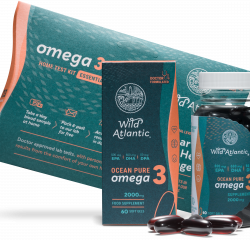This article elucidates the distinctions and similarities between Vitamin D and its variant, Vitamin D3.
It delves into each vitamin’s unique characteristics, their sources, and how the body processes them.
The article also explores the potential effects of their intake, optimal consumption methods, and associated advisories.
The aim is to provide comprehensive information to aid in understanding whether D2 or D3 should be the preferred choice for supplementation.
Key Takeaways
- Vitamin D supports calcium and phosphorus absorption for bone health, regulates blood sugar levels, supports cardiovascular health, aids in cognitive function and mood, and lowers the risk of certain cancers.
- Vitamin D2 is found in fungi and yeasts and can be produced by exposing ergosterol to UV radiation, while vitamin D3 is produced by the body when exposed to sunlight and is found in animal-based food sources.
- Both forms of vitamin D are metabolized into the active form and play vital roles in bone health, muscle strength, and immune function.
- Vitamin D3 is more easily absorbed by the body, may regulate gene expression more effectively, helps stimulate the immune system, and is better at maintaining healthy levels compared to vitamin D2.
The difference between Vitamin D and Vitamin D3
Distinct differences exist between Vitamin D and Vitamin D3.
While Vitamin D is a general term for the group of vitamins that includes D2 and D3, Vitamin D3 specifically is a type of Vitamin D that is produced by the body upon exposure to sunlight and is also found in animal-based food sources.
Vitamin D3 is more efficiently absorbed and utilized by the body compared to Vitamin D2. Studies have indicated that Vitamin D3 supplementation is more effective at raising and maintaining overall Vitamin D levels.
Conversely, Vitamin D2, primarily sourced from plants and fortified foods, is less potent and its levels in the body are not as easily maintained.
Therefore, it is essential to acknowledge these differences when considering dietary supplementation.
Exploring the Vitamin D2 and D3 Similarities
Both forms of this essential nutrient, primarily found in sunlight exposure and dietary intake, undergo processing in the liver and kidneys to become biologically active.
Despite different sources, Vitamin D2 and D3 share similarities in their function and metabolic pathways.
Both forms are available as over-the-counter supplements and contribute to maintaining normal blood levels of calcium and phosphorus, thereby promoting overall bone health.
Furthermore, both D2 and D3 perform key roles in cell growth modulation, neuromuscular functions, and inflammation reduction.
However, the efficacy of these two vitamins in maintaining circulating concentrations of Vitamin D is a topic of ongoing research.
Regardless, ensuring adequate intake of either form is vital for optimal health.
Vitamin D2: An Overview
Ergocalciferol, commonly known as D2, is a form of the nutrient primarily derived from certain fungi and yeasts upon exposure to ultraviolet radiation. It is a vital vitamin that plays a crucial role in the absorption and metabolism of calcium and phosphorus in the body, contributing to maintaining healthy bones and teeth.
Despite its plant-based origins, ergocalciferol is added to various fortified foods, including cereals and plant milks, enhancing their nutritional value. Furthermore, it is available as a dietary supplement, often prescribed to individuals diagnosed with vitamin D deficiency.
However, despite its benefits, it is less potent and less easily absorbed by the body than its counterpart, cholecalciferol, or vitamin D3.
Vitamin D3: An In-depth Look
Cholecalciferol, commonly referred to as D3, is synthesized in the skin upon exposure to sunlight and is also found in animal-based foods such as fatty fish and egg yolks.
Vitamin D is critical to human health, promoting calcium absorption, bone health, and immune function. Research indicates that D3 is more effective than D2 at raising blood levels of vitamin D. Additionally, D3 is converted into its active form more efficiently, thus providing greater health benefits.
However, D3 levels can be influenced by factors such as age, skin type, geographic location, and sun exposure. Despite its importance, vitamin D3 deficiency is prevalent, necessitating the consumption of fortified foods, supplements, or increased sunlight exposure.
A Comparative Look: Vitamin D2 Vs D3
The comparative analysis of Vitamin D2 and D3, two crucial forms of this essential nutrient, encompasses understanding their respective purposes and benefits.
Recognition of symptoms indicative of a deficiency is also an important aspect of this analysis.
Additionally, the effectiveness of each type should be considered, as well as guidance on recommended dosages.
Exploring these topics will provide a comprehensive understanding of their multifaceted roles in maintaining good health.
This discussion is particularly significant given the prevalence of Vitamin D deficiency in various populations and the critical need for appropriate consumption through diet, sunlight exposure, or supplementation.
Purposes and Benefits
Essential for maintaining bone health, supporting immune function, and reducing the risk of certain diseases, both Vitamin D and Vitamin D3 play crucial roles in human health. These vitamins aid in absorbing calcium and phosphorus, nutrients vital for bone development and strength.
Additionally, they modulate cell growth, immune function, and inflammation. Research suggests a correlation between adequate levels of Vitamin D and reduced risk of multiple sclerosis, heart disease, and influenza.
There is also evidence suggesting Vitamin D3 may be more effective than Vitamin D in maintaining adequate levels of the vitamin in the body. However, both forms are viewed as necessary and beneficial, contributing significantly to overall health.
Recognising the Symptoms of a Vitamin D Shortfall
Having explored the purposes and benefits of Vitamin D, it’s imperative to discuss the symptoms that signify a shortfall of this essential vitamin. Deficiency in Vitamin D can manifest in various ways:
- Bone Pain and Muscle Weakness: These symptoms may be subtle initially but can become pronounced over time. Vitamin D plays a critical role in bone health and muscle function.
- Mood Changes: Vitamin D has been linked to mood regulation. Deficiency may lead to depression or mood swings.
- Reduced Immune Function: Frequent infections and illnesses may indicate a low Vitamin D level, vital for immune system health.
Recognising these symptoms early can lead to timely intervention, helping to restore adequate Vitamin D levels and mitigate associated health risks.
Effectiveness of Each Type
Effectiveness of each type, namely D2 and D3, largely hinges on their absorption rates and the subsequent physiological responses within the body. Research indicates that vitamin D3 is more effective in raising and maintaining vitamin D status within the body due to its superior bioavailability and metabolism.
This is especially relevant in the context of supplementation, where D3 consistently outperforms D2. Furthermore, studies suggest that D3 is more potent in reducing mortality.
However, both D2 and D3 contribute effectively towards bone health and calcium absorption.
Ultimately, the choice between D2 and D3 may be influenced by dietary preferences, with D2 being suitable for those following a vegan diet, and D3 being derived from animal sources.
Recommended Dosages
Recommended dosages of these two nutrient forms vary, with factors such as age, health status, and sun exposure playing a role in determining the appropriate amount. According to the National Institutes of Health, the average recommended daily intake of vitamin D is:
- 600 IU (International Units) for individuals aged 1-70 years,
- 800 IU for those over 70 years, and
- 400 IU for infants aged 0-12 months.
However, these recommendations assume minimal sun exposure. Individuals with limited sunlight exposure or absorption issues may require higher dosages.
It’s essential to note that excessive intake may lead to vitamin D toxicity. Therefore, it’s crucial to consult a healthcare provider before starting a vitamin D supplement regimen.
Drug Interactions and Advisories
The ensuing discourse will delve into the potential intersections of Vitamin D supplementation with other pharmacological treatments, underscoring the necessity for vigilance in managing concurrent medications.
The conversation will also encompass salient safety protocols and considerations, highlighting the importance of adherence to recommended dosages and the risks associated with excessive intake.
Furthermore, the implications of Vitamin D’s interactions with specific medications and supplements will be explored, underlining the importance of consultation with healthcare providers prior to incorporating new supplements into one’s regimen.
Potential Overlaps with Other Medications
Potential interactions between vitamin D supplements and certain medications warrant careful consideration. Certain drugs, including antacids, anti-seizure medications, and corticosteroids, can negatively affect vitamin D levels in the body.
- Antacids, particularly those containing aluminum, can increase the rate at which the body metabolizes vitamin D, potentially leading to a deficiency.
- Anti-seizure medications, such as phenytoin, can have a similar effect, increasing the rate at which vitamin D is broken down. This may necessitate a higher dosage of vitamin D supplementation.
- Corticosteroids can reduce calcium absorption, thereby reducing the efficacy of vitamin D, which requires calcium to function effectively.
Therefore, individuals taking these medications should closely monitor their vitamin D levels and adjust their supplementation.
Safety Protocols and Considerations
Safety protocols and considerations play a significant role in consuming and absorbing these essential nutrients, especially to avoid toxicity and ensure optimal health. The adequate intake of both Vitamin D2 and D3 must be carefully monitored, as excessive consumption can lead to hypercalcemia, characterized by symptoms such as nausea, weakness, and kidney dysfunction.
Certain medications may interact with Vitamin D supplements, potentially altering their absorption and effectiveness. Supplements might be necessary for individuals with limited sunlight exposure or absorption issues. However, the decision to supplement should always be guided by a healthcare professional.
Regular monitoring of Vitamin D levels is also recommended to prevent deficiencies and to ensure a balanced intake. Therefore, safety protocols and informed decisions are key in effectively using these vitamins.
Vitamin D Intake: The Optimal Way
Optimal Vitamin D intake can be achieved through a combination of sunlight exposure, diet, and supplementation, considering individual factors such as geographical location, dietary habits, and specific health conditions.
Sunlight Exposure: Depending on geographic location and skin type, 10-30 minutes of midday sunlight on the face, arms, back, or legs without sunscreen can provide sufficient Vitamin D.
Dietary Habits: Foods such as fatty fish, egg yolks, and fortified foods like milk and cereals are good dietary sources of Vitamin D.
Supplementation: Individuals with limited sun exposure, certain health conditions, or dietary restrictions may require Vitamin D supplements to meet their needs.
These methods contribute to maintaining optimal Vitamin D levels, which are essential for various bodily functions, including bone health, immune function, and inflammation control.
The Verdict: Should You Opt for D2 or D3?
Transitioning from the optimal ways of obtaining Vitamin D, the focus now shifts to the debate between choosing Vitamin D2 or D3.
Comparative studies between D2 and D3 have indicated that both forms are crucial for maintaining health. However, Vitamin D3, produced naturally in the body upon exposure to sunlight, is more efficiently absorbed and utilized. It is also found in animal-based food sources, making it readily available.
On the other hand, Vitamin D2, primarily derived from plant sources, is used extensively to fortify foods, providing an alternative for those with dietary restrictions.
The choice between D2 and D3 should be made considering individual dietary preferences and health requirements, and after consultation with healthcare professionals.
Frequently Asked Questions
What Role Does Vitamin D Play in Supporting Mental Health and Cognitive Function?
Vitamin D plays a crucial role in supporting mental health and cognitive function. It is involved in neurodevelopment and neuroprotection, and deficiencies have been linked to various psychiatric and neurological disorders such as depression and dementia.
How Does Vitamin D3 Stimulate the Immune System Compared to Vitamin D2?
Vitamin D3 stimulates the immune system more effectively than Vitamin D2 by regulating gene expression. It is more easily absorbed by the body, thus potentially enhancing immune response more efficiently than its counterpart, Vitamin D2.
Conclusion
In conclusion, both Vitamin D2 and D3 are critical in maintaining optimal health. They are both beneficial in raising Vitamin D levels, although the body more easily absorbs D3.
Regardless of the source, proper intake and monitoring are necessary to prevent potential toxicity. Individual health circumstances should guide whether to opt for D2 or D3, making consultation with a healthcare provider imperative for personalized advice.





























